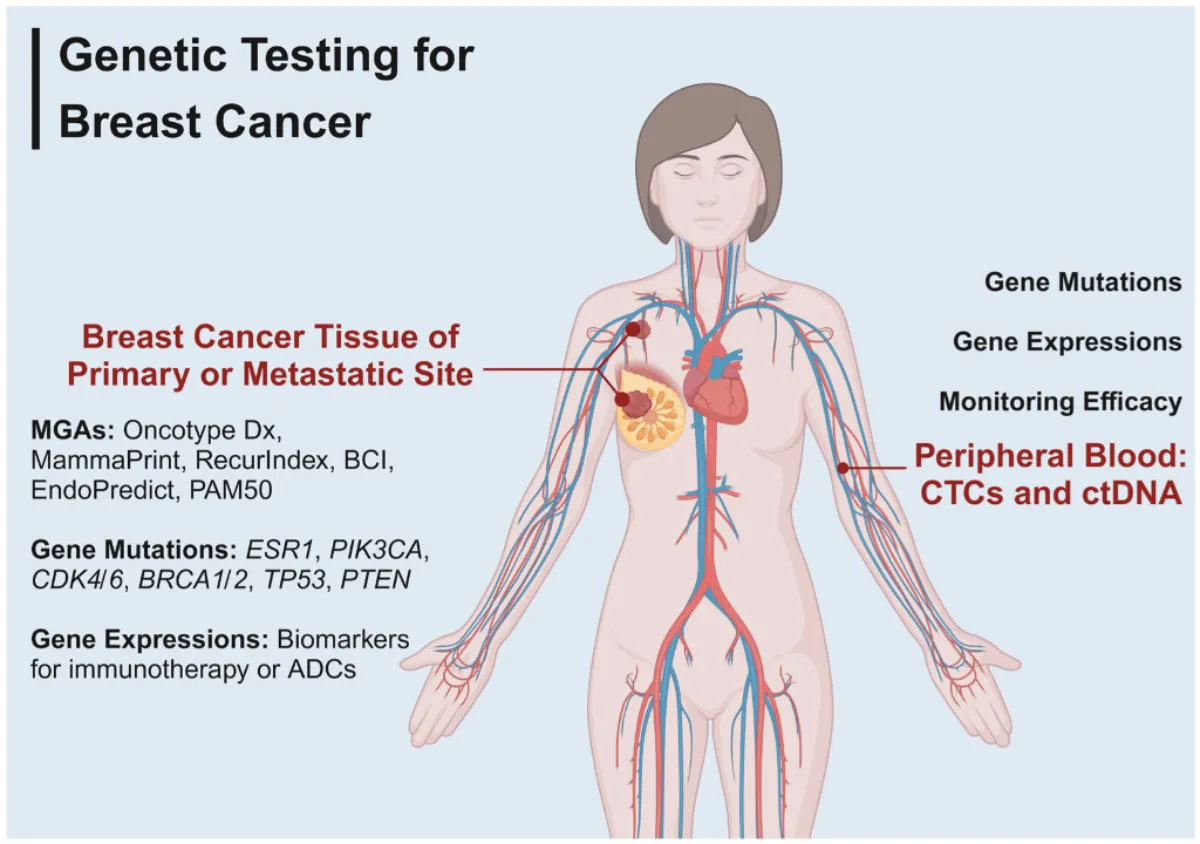Like other invasive tumors, your breast cancer will be categorized using three receptors if it has spread, or metastasized. There are numerous treatments available, but depending on your MBC subtype, they may or may not be successful.
Breast cancers are not all the same. Your doctor will probably run more tests if you have previously been diagnosed with MBC.
You and your medical team will be able to choose the best course of action with the aid of this information. For breast tumors with a particular subtype, gene mutation, or other characteristics, some treatments work better.
Metastasis molecular testing
To find special elements, such protein and gene alterations, your doctor might suggest laboratory testing on a tumor sample.
They might then choose a treatment with the use of this knowledge. When these proteins or gene alterations are present, some medications function optimally.
Gene mutations in BRCA1 or BRCA2
The genes BRCA1 and BRCA2 are involved in DNA repair. Mutations in these genes are associated with an increased risk of breast cancer. trustworthy source.
Tumors with mutations in either gene may benefit from treatment with a more modern class of drugs called PARP inhibitors. These drugs stop cancer cells from fixing their damaged DNA, either on their own or in combination with chemotherapy.
PD-1 as well as PD-L1
When attached to another protein known as PD-L1 (programmed death-ligand 1), the T cell (immune cell) protein PD-1 (programmed cell death protein 1) stops the immune system from over-activating.
Breast cancer cells and certain immune cells in the body may express PD-L1. This protein prevents the cancer from being destroyed by immune cells.
Immunotherapy medications may enhance the results of regular chemotherapy if you have triple-negative breast cancer with this receptor.
Mutations in the PIK3CA gene
Up to 40%Trusted Source of HR-positive, HER2-negative breast tumors had PIK3CA mutations.
If a PIK3CA mutation is discovered, your doctor might recommend medications that target the PIK3CA gene.
Alternatives for treatment
Although there is presently no cure for MBC, there are treatments to control symptoms and prevent the illness from spreading:
The radiation: Tumors that have spread to other body parts can be reduced with this treatment. It’s typically used to help decrease pain and other symptoms.
Hormone treatment: It is advised to treat HR-positive malignancies with anti-estrogen medication, such as tamoxifen, fulvestrant (Faslodex), or aromatase inhibitors. Hormone therapy aids in promoting the growth of cancer cells.
Targeted treatment: This treatment focuses on aberrant cell proliferation caused by alterations in Trusted Source cells. For HER2-positive breast cancer, targeted treatments like trastuzumab or pertuzumab may be given in addition to chemotherapy. Targeted medicines can also be utilized to target BRCA gene mutations or in conjunction with hormone therapy.
Operation: Surgery might not be sufficient to eradicate the entire malignancy if it has already spread.
Chemomedicine: In particular, if your tumor is triple-negative and resistant to hormone treatments, your doctor might advise chemotherapy.
Checking for metastases
To determine where and how the cancer has metastasized, or spread, your doctor will examine the findings of diagnostic imaging tests, including bone scans, X-rays, MRIs, PET scans, and CT (CAT) scans. We call these metastases.
Recognizing your MBC subtype
Three important receptors are examined in standard MBC testing. Reliable Source:
. receptor for estrogen (ER)
. receptor for progesterone (PR)
. receptor-2 for human epidermal growth factor (HER2)
The cancer is classified as hormone receptor-positive (HR-positive) if the test results for ER or PR, which are proteins on the cells that bind to substances in the blood. Your doctor may then divide the cancer into one of the following subtypes:
. HER2-negative and HR-positive
. triple-positive (positive for HER2 and HR)
The triple-negative
A tumor that tests negative for HER2, ER, and PR is referred to as triple-negative breast cancer.
The American Cancer Society estimates that between 10% and 15% of breast cancers are triple-negative.
Three times positive
The tumor is positive for HER2, ER, and PR when the breast cancer is triple-positive.
A 2019 research of 1,205 breast cancer patients found that about 10% of them had triple-positive breast cancer.
HER2-negative or positive
Every breast cell has the protein HER2, which is involved in cell proliferation (Trusted Source). HER2-positive tumors are breast cancers that have higher-than-normal amounts of this protein.
Positive or negative HR
The estrogen and progesterone receptors are examples of hormone receptors. Hormones such as progesterone and estrogen can “feed” the cancer cells thanks to these proteins.
There are two types of hormone receptor status: positive and negative. To be classified as HR-positive, you can test positive for either ER, PR, or both.
Approximately 80% of breast cancers test positive for ER, according to Breastcancer.org. Approximately 65% of those are also PR-positive.

